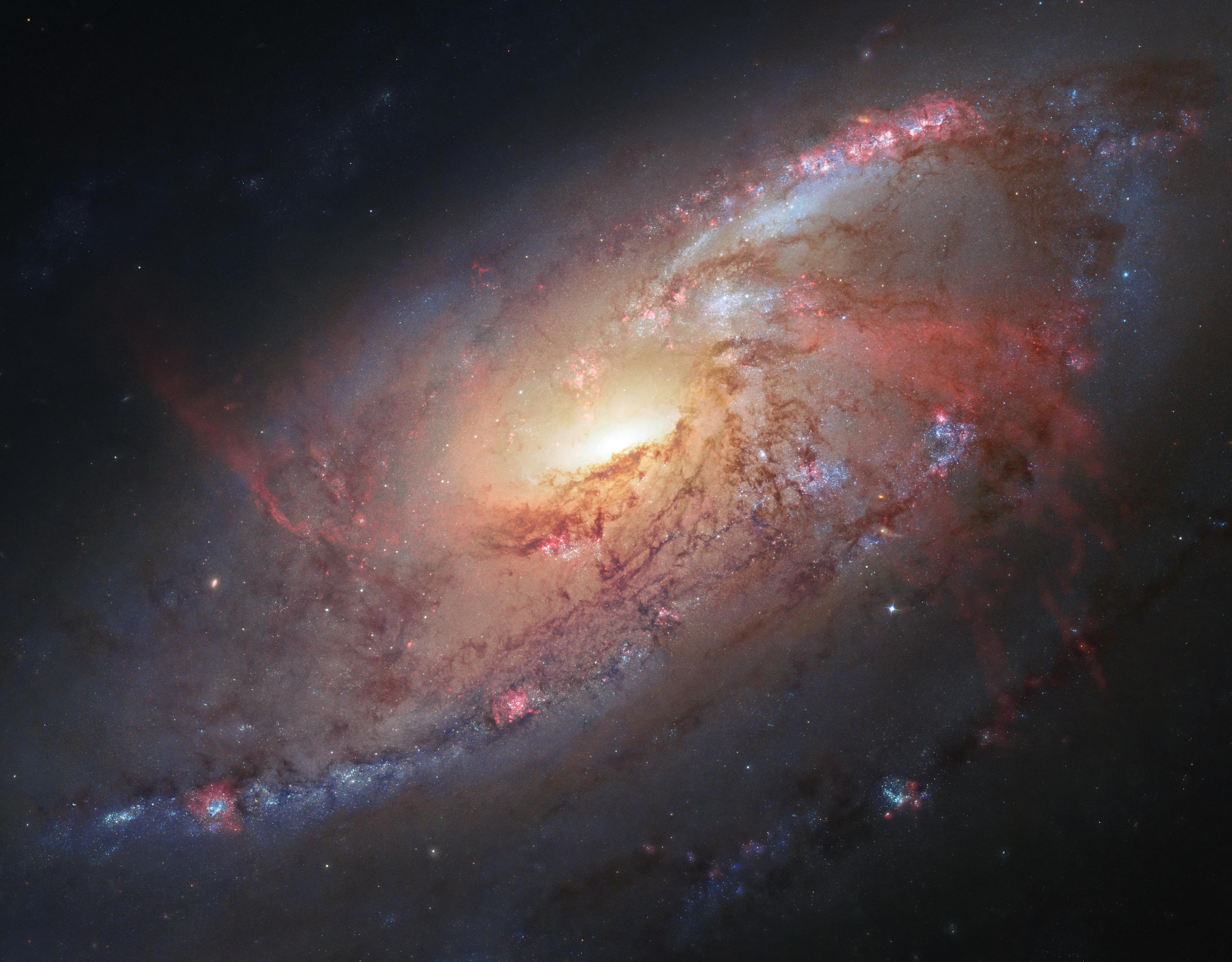
Spiral Galaxy M106
Renowned astrophotographer Robert Gendler took science data from the Hubble Space Telescope archive and combined it with his own ground-based observations to assemble this composite photo of the magnificent spiral galaxy Messier 106 (M106). Gendler retrieved archival Hubble images of M106 to assemble a mosaic of the center of the galaxy. He then used his own and fellow astrophotographer Jay GaBany's observations of M106 to combine with the Hubble data in areas where there was less coverage, and finally, to fill in the holes and gaps where no Hubble data was available. The center of the galaxy is composed almost entirely of Hubble images. The outer spiral arms are predominantly Hubble data colorized with ground-based data taken by Gendler's and GaBany's telescopes. The image also reveals the wispy red glow from two unusual spiral arms of gas that do not share the same plane as the other star-filled arms of the galaxy. Scientists have discovered that these "anomalous arms" glow more brightly at X-ray and radio wavelengths. This portrait of M106 contains only the inner structure around the halo and nucleus of this active galaxy. Large amounts of gas from the galaxy are thought to be falling into and fueling a supermassive black hole contained in the nucleus. For more information, visit: hubblesite.org/image/3143/news/91-astronomical
